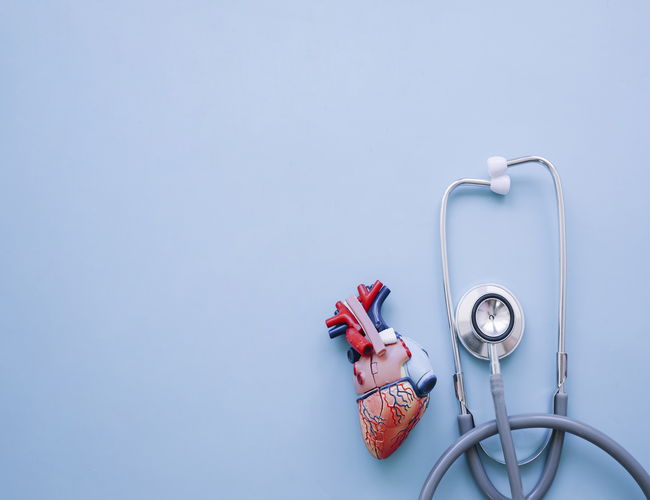Impact of COVID-19 on Digital Cardiology Care
October 31, 2021Since the onset of COVID-19, cardiology care has been under extreme risk and adverse complications. For this reason, the management of cardiac patients in the hospital environment has proven to be a real, enormous challenge during and after the pandemic.
However, the use of cath lab software has facilitated the essential shift towards patient-centric cardiac health care. Digital cardiovascular solutions through tools like cardiology digital reporting software have paved the way to continue the diagnosis and treatment of cardiovascular care. Cardiologists make use of video consultations and attend virtual clinics.
Cath lab software developers have upgraded their pre-existing software with a newer and better approach towards cardiology. The changes in the existing cardiac care are a means of better functioning of the cardiology department in the future. So, let’s unwind how the innovations in cath lab software are reshaping the method of cardiovascular care post-Covid-19.

Impact of COVID-19 in digital cardiac health care
COVID-19 complications are more acute in patients with cardiovascular diseases. As a result, people were reluctant to seek medical help by visiting the healthcare centre during the ongoing pandemic season. All of this resulted in the need for better and innovative cardiac care strategies that ensure better patient engagement and trust in digital medical infrastructure. There was an increased dependence on cath lab software and other virtual solutions to get the needed cardio-related services without compromising on the quality.
During COVID-19, cardiac health care also suffered a severe backlog of work, owing to the mandate of social distancing and coronavirus contamination. Therefore, cardiovascular care came up with the below-mentioned digital solutions to adapt to the pandemic evolution.
1. Modernizing primary preventive cardiology
Primary prevention is an essential aspect of cardiology as it minimises the complications, special consultation and admission in case of emergency. Using cardiology digital reporting software combats the failures to meet cardiac care, even during the pandemic crisis. Using digital cardiac care tools resulted in an increase considering their positive role in monitoring health through:
- Smoking cessation
- Weight loss programs
- Optimised blood pressure control
- Glycemic control in diabetes
- Lipid and cholesterol levels
Recommended Read: Medical Imaging Emerging Trends in 2021
2. Personalized cardiac care
It’s not just the doctors and the patients who need to adapt themselves to the modernised cardiac care setup. Even cardiac technology providers need to evolve to come up with devices that promote cardiac monitoring and diagnosis at an individual level.
For example, Zio service by iRhythm. This service allows the individual to monitor and diagnose the cardiac care needed by them, visiting no hospital. So, despite abiding by the norm of social distancing, individuals can receive much needed clinical applications.

3. Imposed need for digital infrastructure in cardiac care
COVID-19 though swiped out multiple lives and created havoc amongst the population at large, it created a platform for innovation in various departments of healthcare. Cath lab management software, which existed even before COVID-19, experienced updates and upgrades. Healthcare centres and cath labs increased the level of automation in their data management and report deliverables. And moving forward, this digital wave of innovation is not going to stop until a digitally empowered age of cardiac care is observed.
4. Telemedicine-based cardiac rehabilitation programs
Cardiac rehab programs are needed post-acute myocardial infarction, cardiac and vascular surgeries and post percutaneous intervention. Post COVID-19, when social distancing became a mandate, such programs took the help of telemedicine to continue playing their role. As a result, patients no longer needed to skip such a program in the fear of COVID-19 and also their cardiovascular risk profile improved.
5. Use of digital health and telemedicine for cardiac surgical patients
Experts make use of data provided by cardiology digital reporting software to assess the patient’s history, echocardiography, electrocardiogram, imaging modalities and more. Digital cameras, smartphones, and image transmission through video conferencing identify and minimise the post-surgery complication in cardiac patients. There are digital educational programs that emphasise local monitoring of anti-coagulation profiles and on-time identification of bleeding complexities.
Apart from the digital cardiac health solutions, the other impact of COVID-19 as seen on people is the rise in their awareness level. This is also because heart patients are at significant risk of adversities related to COVID-19.
People have started valuing the significance of a healthy lifestyle to combat the risks associated with heart and coronavirus. Physical activity has become a daily routine for several people, either in-house or outdoors, if possible. Patients with cardiac care history continue with their medicines and virtual assistance by means of the above-mentioned solutions. Presence in the virtual environment has become an unsaid mandate, either to remain socially active or to avail medical assistance like cardiac follow-ups.
Statistical insight on the impact of COVID-19 on cardiology care


After the thorough analysis of the above three graphs, it is observed that COVID-19 spread dropped the diagnosis of cardiovascular diseases largely.
Wrapping up
The COVID-19 pandemic had a significant impact on cardiac care, with a decline in the number of diagnoses, treatment and even cardiac rehab programmes. But with on-time upgrades and inventions by digital health care providers and cath lab software developers, the negative decline in cardiac care did not sustain for long.
Digital tools and telemedicine services re-directed the way the cardiology health departments function today. Softcath software is one ruling example of digital cardiac care in today’s time. Try it, for a flawless experience with your patients.
Also Read: 10 Benefits Of Using The SoftCath Cardiology Software

0 Comments